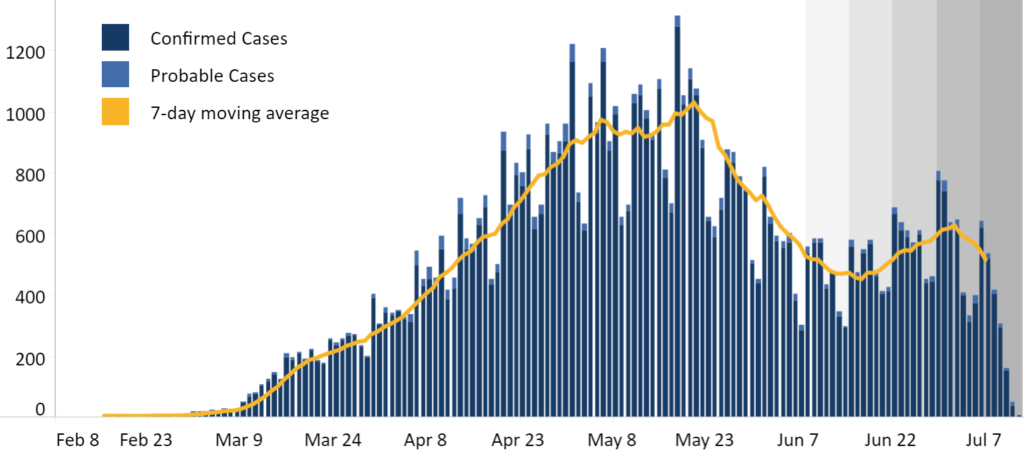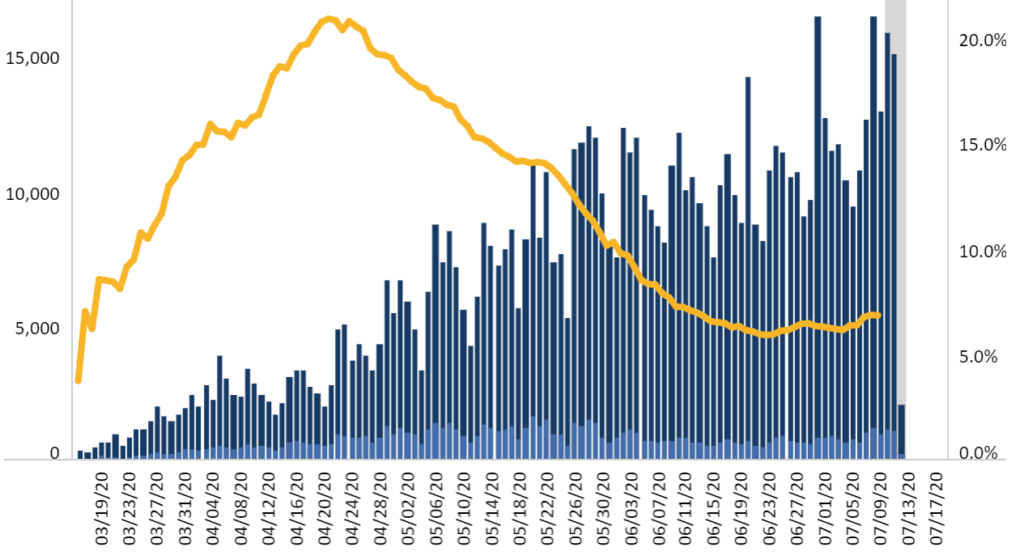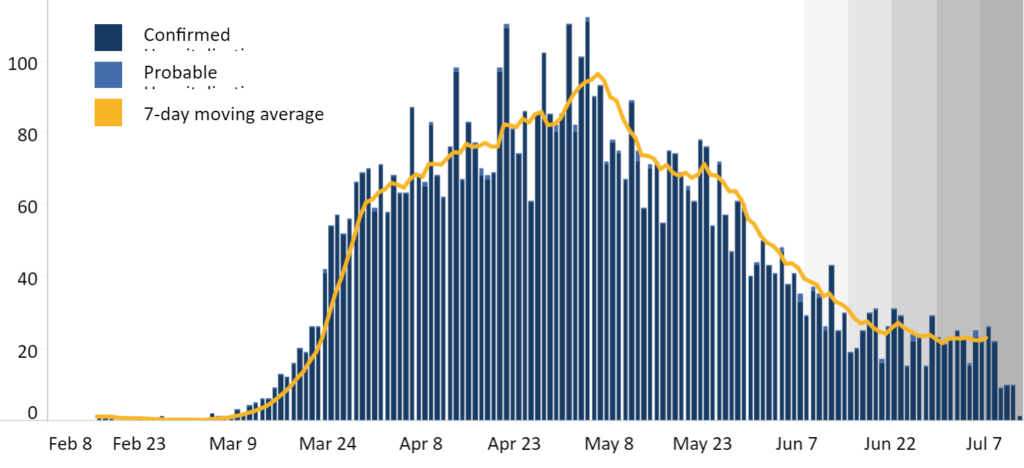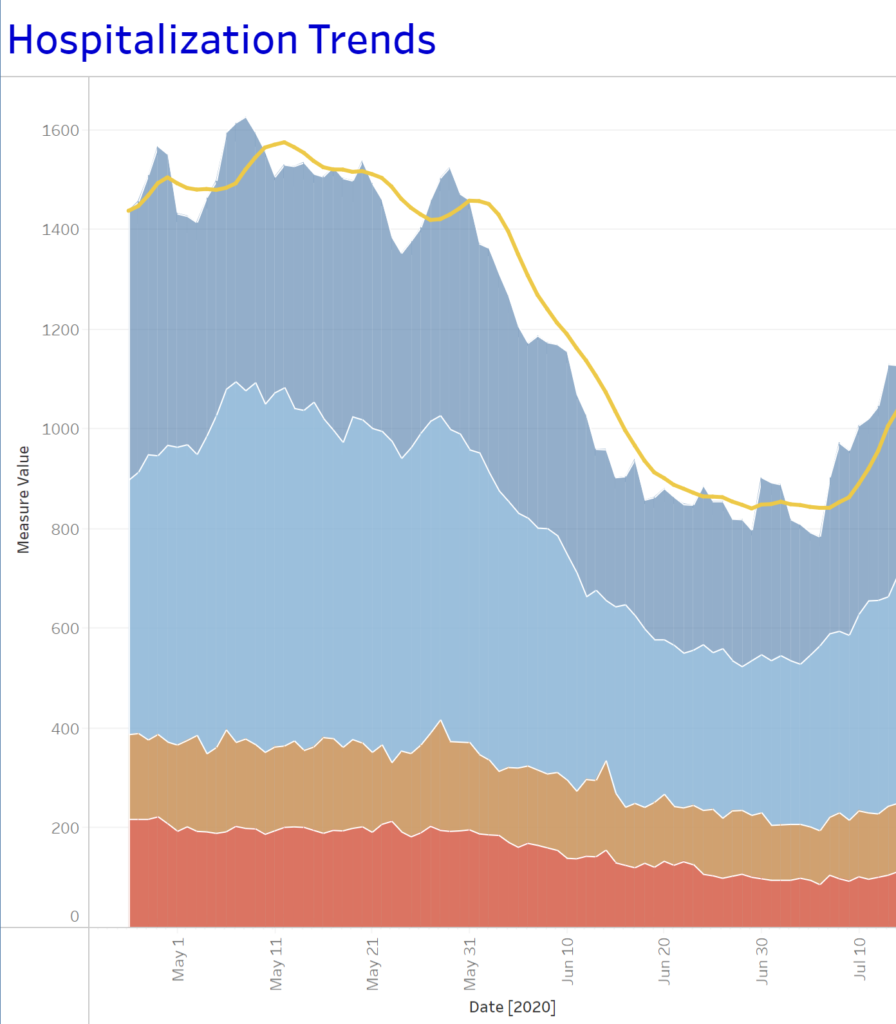by James A. Bacon
Yesterday, Kerry Dougherty observed that while COVID-19 confirmed cases have increased in recent days, deaths from the virus have not. For those of you who absorb data visually, I thought I’d supplement her post by reproducing some charts from the Virginia Department of Health COVID-19 dashboard.
The chart above shows the number of confirmed and probable COVID-19 cases, along with the seven-day moving average (which smooths out daily fluctuations). Clearly, after a month of declines, the trend-line turned back up in mid-June. The big question: Does the increase in confirmed cases reflect the increased incidence of testing or an increase in the incidence of the disease in the general population?
This chart shows the number of tests, both positive (light blue) and negative (darker blue) and the seven-day moving average of the test-positive rate. From a high of almost 21% in April, the test-positive rate declined to as low as 5.9% before trending slightly higher in the past few weeks. The uptick in tests confirming the presence of the virus suggests that the disease is spreading a little faster than before… but not much.
So, the next question is, how many people are being hospitalized? If a lot of people are getting COVID-19 but nobody is getting sick enough to require hospitalization, is that a matter of concern?
The good news here is that, according to VDH data, the number of new hospitalizations, while not decreasing, has leveled off. There may be more COVID-19 cases, but that’s not leading to more people heading to the hospital.
However, a note of caution. Here is the graph published by the Virginia Hospital and Healthcare Association.
The VHHA data is not identical to VDH data. VDH measures new hospitalizations, a proxy for admission. VHHA measures the number of COVID-19 patients being treated in hospitals on any given day, which may differ of increase if patients are sicker and being held longer than before. A comparison of the two graphs suggests that, while the number of new hospitalizations is not increasing, patients in the system may be somewhat sicker and require lengthier stays.
Then there is the ultimate yardstick: deaths.
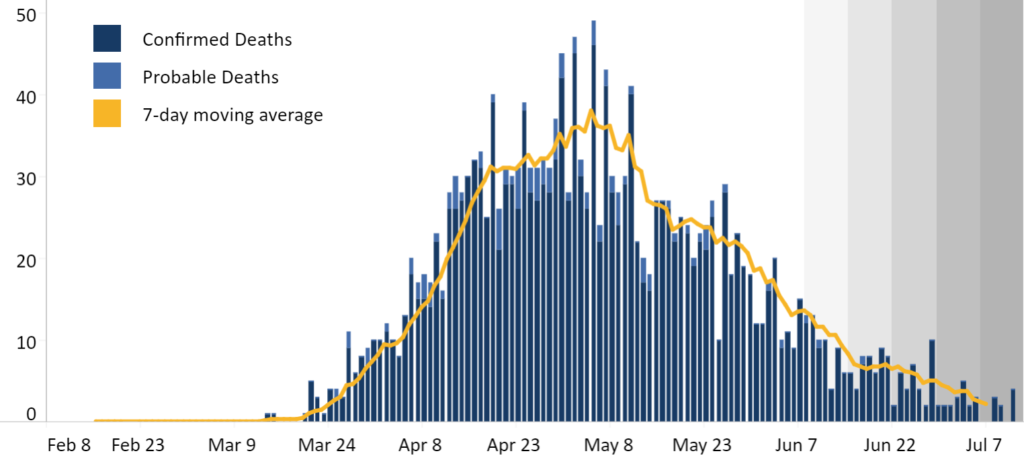
This VDH chart shows that deaths have declined precipitously. Indeed, there have been a few days in which zero COVID-related deaths were reported in Virginia. That is phenomenally good news. There is one caveat, however. Deaths are downstream, so to speak, from hospitalizations, which are downstream from confirmed cases. which are downstream from actual infections. When people die from the virus, it is often as much as four weeks after being infected by it. Thus, one might predict a surge in deaths roughly three weeks after the surge in new confirmed cases. If this rebound occurs, we should be able to detect it in about a week or two.
If the surge in deaths does not materialize, it would be fair to say there is no need to panic, as the national media is doing over the increase in cases in Texas, Florida and California. Conversely, if deaths move higher, then we will need to maintain our vigilance, which means:
- Maintaining restrictions on mass gatherings that could turn into super-spreader events;
- Maintaining best virus-containment practices in places of commerce and employment;
- Voluntarily wearing masks in public places, especially indoors;
- Identifying and disseminating best practices in long-term care facilities;
- Focus contact tracing in Hispanic communities where the spread of COVID-19 at present is the most prevalent. This may require hiring more bilingual contact tracers.
- Keeping Virginia open for business and commerce. Protect the vulnerable and let the healthy get back to work.

